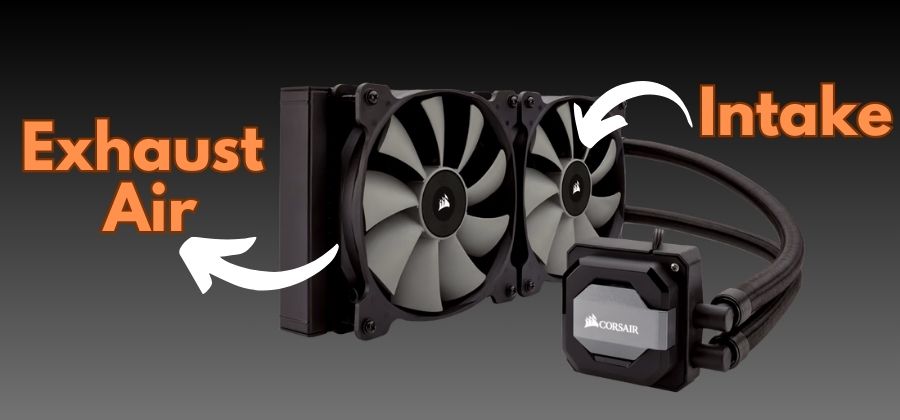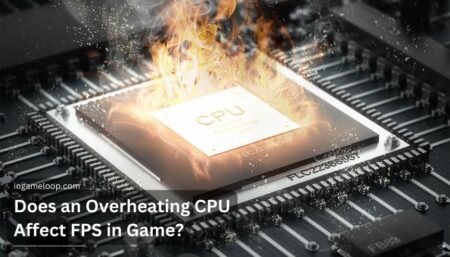
It’s no secret that using fans is the best way to keep the parts of your computer cool. The processor doesn’t have fans attached to them, but graphics cards are—some offers single, whereas few have dual or triple fans. Even though you might not experience heat-related problems, conducting rigorous system activities could cause your system’s CPU to get a little too warm. In this situation, it would help to know if CPU coolers could help you to deal with thermal mismanagement or not.
Support that you have recently bought an AIO cooler since your old CPU cooler wasn’t keeping your PC cool enough, and you want to ensure you get the best performance out of it. But you’re wondering, are CPU Coolers intake or exhaust air? Others have posed that query besides just you. Luckily, there are many views on this subject, and it would be worth your while to read all of the arguments described in this article. So let’s get into it and find the answer to your query.
What are Exhaust and Intake fans?
The hot air removed by a heatsink from matching components has a propensity to hang around and heat up the interior of your computer. This indicates that the fans are reusing the “old air” to cool the system, which isn’t ideal. Addition of fans that either remove this ambient heat or bring in new, cooler air for utilization is therefore crucial. The function of the intake and exhaust fans is this. Their distinctions are quite straightforward: Fresh air is pumped into the computer via intake fans, while exhaust fans expel stale air.
Together, they can help keep your surroundings from getting too warm. Intake and exhaust fans are attached to your computer’s case rather than to individual components. Around your case, there could be grills with four screw-sized holes in each corner. You can set up intake and exhaust fans at these locations. They obtain electricity by being inserted into three- or four-pin motherboard sockets. Make sure you know where these sockets are and how many you have on your motherboard if you want to buy fans for your own computer.
Argument for Airflow
While putting them on your PC might assist in lower temperatures, we can use our heads and place them in clever locations to get the most out of our cooling. We can do the following with one intake fan and one exhaust fan:
- The intake fans allow for the entry of fresh air.
- The system receives chilly air thanks to the fresh air mixing with it. Heatsinks utilize this cool air to absorb heat from parts, turning it into heated air.
- Utilizing exhaust fans, the computer pushes the heated air outside.
We have a straightforward intake, extract, and exhaust system that continuously feeds cool air into the computer and exhausts heated air. Making the most of your system’s fans is possible with this, which is referred to as the “airflow” of a computer. The easiest way to see airflow is to picture it as a stream of air that travels from the intake fans to the exhaust. We want as much of the PC as possible to be exposed to this airflow. Intake fans should be mounted on the front of the PC mostly.
Are CPU Coolers Intake or exhaust?
Contrary to AIO coolers, most CPU fans are made primarily for exhaust because they are utilized to push hot air outside of the computer. However, some CPU fans are available with two fans—one for intake and one for exhaust—in a twin-fan system. It would help if you kept in mind that you are entirely free to decide which way you want to position the fans. Depending on your needs, you can arrange the fans so that the CPU fans are either exhaust or intake fans. But it may be a bit complicated if you want a twin system.
When using a single fan, the fan is often placed on the side of the heatsink facing the front of the tower (the RAM side), blowing air through the heatsink and into the case’s back. The fan indicated above is the same in a two-fan setup (push-pull). The fan attached to the heatsink’s opposite side is positioned to support the first fan. It is pointed in the direction of the heatsink to draw air through it. So in most cases, it is a dual strategy that works best when one fan draws the air and the other spits it out.
Duality of Intake and Exhaust
As we have read before, CPU coolers are essentially exhausted, but the newer models of processors dissipate a lot of heat. The Ryzen processors are especially well known for their heat issues. In situations like this, opting for a dual system is preferred. The dual system works with two fans on the side of the processor. One acts as an intake and the other as an exhaust, so the air is sucked at the intake and blown out, creating the perfect airway to cool your CPU.
Conclusion
The CPU coolers are primarily exhaustive, but you can go for a few combinations with both types of functionalities; intake and exhaust. Such coolers are twin-fan systems. But which one you need solely depends on your choices and circumstances. If you have a high-end system and want maximum performance, then having both intake and exhaust is the best option. They will keep your temperatures stable, and you won’t face any issues like lagging or bottleneck. But there is another factor to be taken into account, the PC case.
Your PC case plays a vital role in deciding the positions and placements of your fans. Some cases are designed to optimize your cooling and back up the fan’s performance. If you have a typical case, then an exhaust fan would best suit you, but if you are looking for a better temperature, then purchasing a new case that supports dual cooling would be optimal for you. That said, it is time to conclude our article. We hope that the information provided helped you in making your decision.




![Is an Intel Celeron Processor Good? [2024]](https://www.ingameloop.com/wp-content/uploads/Is-an-Intel-Celeron-Processor-Good-450x257.jpg)

